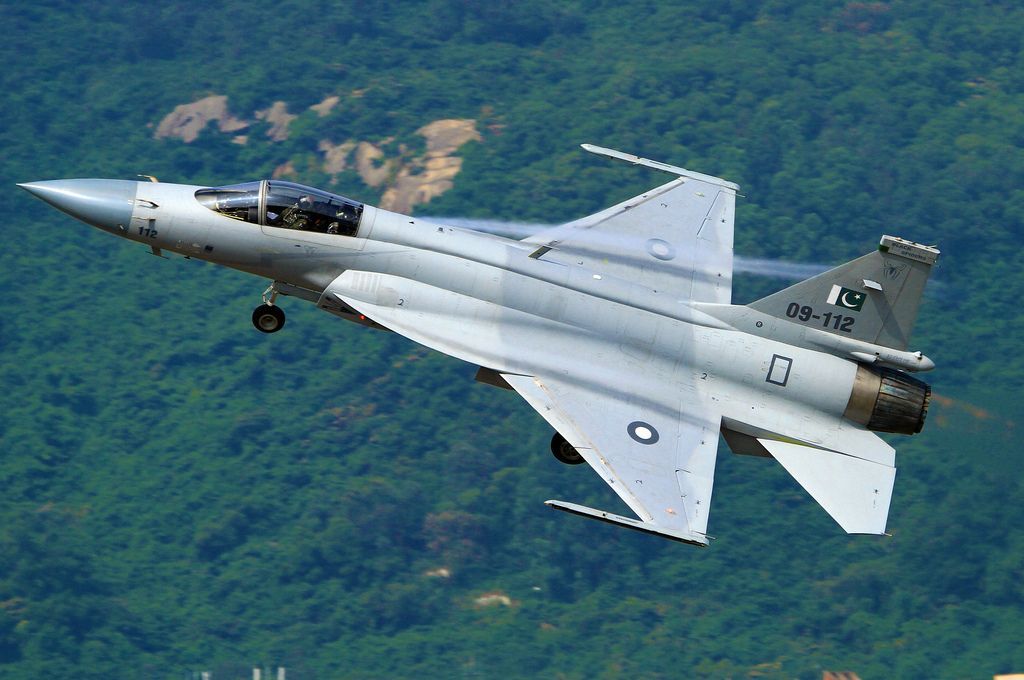WNAM REPORT: The recent aerial clash between Pakistan and India has further intensified tensions in the region. The incident began when the Indian Air Force attempted to breach Pakistani airspace, quickly escalating into a dogfight. The Pakistan Air Force responded swiftly, shooting down three Dassault Rafale jets, one Su-30MKI, and one MiG-29. So far, the Indian side has refrained from commenting on the matter, neither confirming nor denying the reports.
Speaking to the reporter, a Pakistani official who preferred to remain anonymous noted that the Indian Air Force initially attempted to enter Pakistani airspace. The Pakistani Air Force intercepted the incursion through dogfighting. As a result, five Indian jets — three Dassault Rafales, one Su-30MKI, and one MiG-29 — were shot down. When asked which jets Pakistan used to intercept the attack, the anonymous official named the Chinese-made J-10C and the domestically-produced JF-17. However, he emphasized that it was the Chinese J-10C that downed the Indian military aircraft.
Other news circulated by international media outlets also substantiates the above-said information. Thus, on May 08, two officials speaking to Reuters confirmed the drowning down of the Indian jets, and noted that US-made F16 had not taken part in the dogfight. Also, Pakistani Deputy Prime Minister Ishaq Dar confirmed that Chinese-made J10-C take part in the dogfight.
One could argue that the news sparked more joy in Azerbaijan than even in Pakistan itself. As is known, Azerbaijan has opted to modernize its aging military fleet by acquiring the Pakistani-Chinese-made JF-17 Block 3 fighter jets. When Azerbaijan announced the deal, the well-known defense outlet BulgarianMilitary.com praised the move, noting that with this acquisition, the Azerbaijani Air Force had secured second place in regional air power after Russia—leaving not only Iran but also Türkiye, NATO’s second-largest army, trailing behind.
Following Azerbaijan’s recent military aviation deal with Pakistan, Armenian media began circulating reports about Yerevan’s plans to purchase Indian-made, licensed Su-30MKI fighter jets and upgrade its existing Su-30 fleet in India. Meanwhile, some outlets have also leaked information about a possible Tehran-Moscow agreement involving the purchase of Su-30 and Su-35 aircraft, with plans for local licensed production in Iran.
Armenia remains a long-standing adversary of Azerbaijan, and while Baku’s relations with Iran are marked by fluctuations, this news was far from reassuring for the Azerbaijani public.
To be fair, the original Su-30 platform is superior to the JF-17 in several performance metrics. The Su-30’s domestically-equipped radar system boasts a detection range of up to 350 km. However, the export versions — often delivered with downgraded systems — typically see this range reduced to under 250 km. In comparison, the radar system on the JF-17 Block 3 has a range of approximately 200 km.
Where the JF-17 Block 3 holds an edge is in its air-to-air missile capability. The PL-15E missile used by the aircraft has a significantly longer range — estimated to surpass the export variants of Russian air-to-air missiles by at least 30 km.
Some analysts argue that it was not the JF-17, but rather the more advanced Chinese J-10CE that downed Indian aircraft during the recent confrontation. While this may be true, it is worth noting that the JF-17 Block 3 and the J-10CE utilize similar AESA radar technology and are both equipped with the PL-15E missile. Most importantly, both aircraft reportedly participated in intercepting the Indian attack.
On the other hand, it should not be forgotten that capability of Pakistani pilots also played pivotal roles, which give an upper hand to Azerbaijan once again. Because, Azerbaijani pilots take courses in Pakistan.
Finally, it is important to note that aviation technology was once monopolized by the United States, Russia, and a handful of European countries. The best fighter jets were produced by these powers, which posed a significant obstacle for countries like Azerbaijan that aim to pursue an independent foreign policy. These dominant countries either refused to sell advanced combat aircraft or offered only downgraded, low-quality versions.
However, the recent confrontation between Pakistan and India suggests that this long-standing monopoly is beginning to break. Admittedly, Pakistan still relies heavily on China to meet its aviation needs. But developments in Pakistan indicate that this dependency may be overcome in the near future.
Moreover, countries like Brazil and Turkey have already achieved notable success in this field. Even neighboring Georgia is working on certain aviation projects. All of these signs point to a future in which the West and Russia no longer control the global aviation market. Naturally, this shift will benefit all countries striving for independence in their defense strategies — with Azerbaijan foremost among them.


